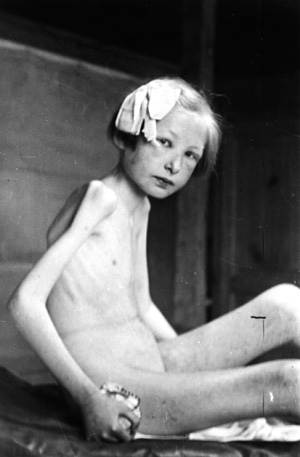The screams that rang throughout the darkened cattle car crammed with deportees, as it jolted across the icy Polish countryside five nights before Christmas, were Dr. Loch's only means of locating his patient. The doctor, formerly chief medical officer of a large urban hospital, now found himself clambering over piles of baggage, fellow passengers, and buckets used as toilets, only to find his path blocked by an old woman who ignored his request to move aside. On closer examination, he discovered that she had frozen to death.
Finally he located the source of the screams, a pregnant woman who had gone into premature labor and was hemorrhaging profusely. When he attempted to move her from where she lay into a more comfortable position, he found that "she was frozen to the floor with her own blood." Other than temporarily stanching the bleeding, Loch was unable to do anything to help her, and he never learned whether she had lived or died. When the train made its first stop, after more than four days in transit, 16 frost-covered corpses were pulled from the wagons before the remaining deportees were put back on board to continue their journey. A further 42 passengers would later succumb to the effects of their ordeal, among them Loch's wife.

Hoover Institution Archives
An estimated 500,000 people died in the course of the organized expulsions; survivors were left in Allied-occupied Germany to fend for themselves.
Between 1945 and 1950, Europe witnessed the largest episode of forced migration, and perhaps the single greatest movement of population, in human history. Between 12 million and 14 million German-speaking civilians—the overwhelming majority of whom were women, old people, and children under 16—were forcibly ejected from their places of birth in Czechoslovakia, Hungary, Romania, Yugoslavia, and what are today the western districts of Poland. As The New York Times noted in December 1945, the number of people the Allies proposed to transfer in just a few months was about the same as the total number of all the immigrants admitted to the United States since the beginning of the 20th century. They were deposited among the ruins of Allied-occupied Germany to fend for themselves as best they could. The number who died as a result of starvation, disease, beatings, or outright execution is unknown, but conservative estimates suggest that at least 500,000 people lost their lives in the course of the operation. More on site, please click link above.
No comments:
Post a Comment